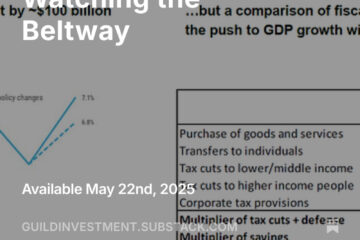The U.S. Economy and Stock and Bond Markets
As trade tensions have escalated during 2018, we have told our readers that we would inform them if we believed the likelihood of a real trade war was becoming greater. Although a full-blown trade war has not yet broken out, we now believe the risk is elevated. The greatest risk is with China; Mexico and Europe present a more hopeful prospect for near-term negotiations. As the conflict with China continues, it may contribute to market volatility during a period of typical seasonal weakness, particularly for U.S. exporters. It may also negatively affect U.S. manufacturers and retailers with domestic markets who will need to raise prices to compensate for increased costs. With that said, the U.S. economy is strong, and strengthened in the second calendar quarter. U.S. GDP, unemployment, and wage data are all moving in a very positive direction. Corporate profits for the S&P 500 have risen in excess of 20%, and are outstripping analyst estimates. Current and projected data suggests that U.S. economic growth will continue at a steady rate for the remainder of 2018 and well into 2019.
Stocks should respond favorably to the positive economic and earnings news for the remainder of 2018 and into 2019, in spite of the fear and negativity that many are feeling about stocks and their outlook.
Stock prices respond primarily to the profits of their companies, and those profits respond to growth in the companies’ markets and in the US and world economies. As long as growth remains strong, stocks rise over the longer term.
Short-term corrections and setbacks in stocks will occur as they always have. While economic growth is maintained, stocks will generally move higher, so dips are creating opportunities for investors to buy stocks. Bonds are rising in yield, and this trend is expected to continue, which is not good for bond prices — so we suggest bond holdings be short-maturity.
Many fear an oncoming major market correction. We do not see one on the horizon at the present time. Major market corrections occur when events such as a major war, a banking crisis in a major country or region (Europe or China, for example), or other unpredicted event occurs, causing a contraction in economic growth and in U.S. or global earnings. It does not look like U.S. disputes with North Korea or Iran will erupt into a major war. In the banking arena, we are closely monitoring the current small problems in European and Chinese banking. We will be aware if these problems grow to a level which could cause a contraction in world or U.S. economic growth, and we will notify you immediately.
The U.S. Dollar’s Impact on Gold, Non-U.S. Stocks, and Foreign Currencies
A strong dollar is causing many commodities, currencies, and foreign stocks to be under pressure. Gold remains in a trading range and continues to be negatively affected by a higher and stronger dollar in spite of higher inflation and other fundamentals which would normally be bullish for gold. Gold is not alone, all commodities are under pressure from the strong dollar and will be under pressure as long as the dollar strength continues.
The euro, the pound and the Chinese yuan have joined a huge cast of foreign currencies and are in declining against the dollar. The purpose of engineering this decline is obviously to diminish the impact of U.S. tariffs on the economies in question. As long as the tariffs are an issue for our trading partners, they will work to cause their currencies to decline for competitive reasons. A positive note is that a strong dollar continues to attract money to U.S. stocks and bonds. U.S. bond interest rates are gradually rising, so we do not recommend anything more than short-term bonds for U.S. investors.
Cryptos
Cryptocurrencies’ recent rally has stalled as Bitcoin has fallen back to the mid-$7000s. As previously, cryptocurrencies seem to be trading with other risk assets. We reported last week in our regular issue covering digital currencies that a slew of crypto- and blockchain-related patents seemed to be supporting the recent rally. Patent activity signifies technical development as well as the ongoing integration of blockchain technology into the financial mainstream, and in the longer term, these remain essentials for the evolution of cryptocurrencies as potential investments.
Thanks for listening; we welcome your calls and questions.



